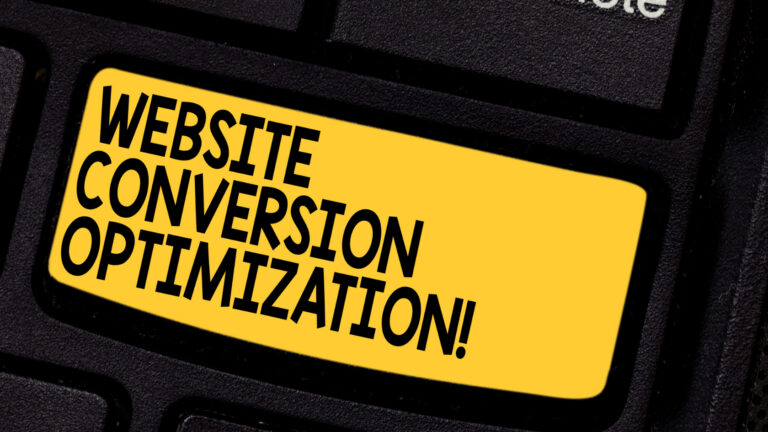
Are you looking to optimize your landing pages for better search engine rankings?
Discover effective SEO strategies that can help you attract more organic traffic and increase conversions.
From conducting keyword research and implementing on-page optimization techniques to creating high-quality content and optimizing page loading speed, this article will provide you with actionable tips and insights to improve your landing page performance.
Take control of your SEO efforts and drive results with these proven strategies.
Key Takeaways
- Thorough keyword research is essential for understanding the target audience’s search terms and optimizing landing page content.
- Utilizing meta tags, header tags, and alt tags can improve visibility in search results.
- Content optimization, including high-quality and relevant content, is crucial for establishing authority and building trust.
- Prioritizing page speed optimization, including minimizing image and file sizes and enabling browser caching, enhances user experience and rankings.
Keyword Research and Selection
To optimize your landing page for search engines, start by conducting thorough keyword research and selecting the most relevant and high-performing keywords. Keyword research is a critical step in your SEO strategy as it helps you understand what terms and phrases your target audience is using to find products or services similar to yours.
Begin by analyzing your competitors’ websites to identify the keywords they’re ranking for. This competitor analysis will give you insights into the keywords that are driving traffic and conversions for them.
Additionally, consider incorporating long tail keywords, which are more specific and have lower competition. Long tail keywords can help you target a niche audience and increase the chances of your landing page appearing in relevant search results.
On-Page Optimization Techniques
When it comes to on-page optimization techniques for your landing pages, there are several key points to consider.
First, meta tags play an important role in helping search engines understand the content of your page.
Second, strategic keyword placement throughout your page can help improve its visibility in search results.
Lastly, optimizing header tags, such as H1 and H2 tags, can further enhance your page’s relevance and readability for both users and search engines.
Meta Tags Importance
One important aspect of optimizing your landing pages for SEO is understanding the quantifiable impact of meta tags. Meta tags influence search engine rankings, but what about user experience?
Meta tags, such as the title tag and meta description, play a crucial role in improving both search engine visibility and user engagement. The title tag appears as the headline in search engine results, giving users an immediate understanding of what your page is about. Incorporating relevant keywords in the title tag can help improve your page’s ranking and attract more clicks.
Similarly, the meta description provides a concise summary of your page’s content, enticing users to click through to your website. By optimizing these meta tags, you can enhance your landing page’s visibility, attract more organic traffic, and ultimately drive conversions.
Keyword Placement Techniques
You can effectively optimize your landing pages by implementing keyword placement techniques, which are on-page optimization techniques.
One important aspect of keyword placement is keyword density. This refers to the frequency at which your target keywords appear within the content of your landing page. It’s crucial to strike a balance between using keywords enough to signal their importance to search engines, but not so much that it feels forced or unnatural. Aim for a keyword density of around 1-3%, ensuring that your keywords are strategically placed throughout your content.
Another technique is anchor text optimization, which involves using relevant keywords as the clickable text for your internal and external links. This not only helps search engines understand the context of your landing page, but also provides a better user experience by guiding visitors to relevant information.
Optimizing Header Tags
To optimize your landing pages effectively, continue the on-page optimization techniques by focusing on optimizing header tags.
Header tags are HTML elements that define the headings and subheadings on a webpage. They provide structure and hierarchy to your content, making it easier for search engines and users to understand the information on your page.
When optimizing header tags, it’s important to follow header tag best practices. Use a single H1 tag for the main heading of your page, and use H2, H3, and so on for subheadings.
Include relevant keywords in your header tags to improve the visibility of your page in search engine results.
Crafting Compelling Meta Tags
Crafting compelling meta tags is crucial for effective SEO strategies on landing pages. By following meta tag best practices, you can optimize your page’s visibility and attract more organic traffic.
Meta tags have a significant impact on search engine rankings and can greatly influence how your page is displayed in search results.
Meta Tag Best Practices
When optimizing your landing page for SEO, it’s crucial to implement effective meta tag best practices.
Meta tags are HTML elements that provide information about the content of a webpage to search engines.
Meta tag optimization involves crafting compelling meta tags that are relevant to the page’s content and keywords.
To ensure the best results, it’s important to focus on meta tag relevance by including keywords that accurately describe the page’s content.
This helps search engines understand the purpose and relevance of your landing page, ultimately improving its visibility in search engine rankings.
When crafting meta tags, it’s important to be concise, using clear and descriptive language that accurately represents the content of your landing page.
Impact of Meta Tags
Improve the impact of your landing page’s meta tags by focusing on relevance and using clear and descriptive language. Meta tags optimization plays a crucial role in determining your page’s search rankings.
Crafting compelling meta tags that accurately reflect the content of your landing page is essential for attracting users and improving your website’s visibility in search engine results. When optimizing your meta tags, consider the keywords that are relevant to your page’s content and include them in the meta title and description. Use concise and compelling language to entice users to click on your page.
Remember that meta tags have a direct impact on search rankings, so it’s important to invest time and effort into crafting effective and relevant meta tags that accurately represent your landing page’s content.
Creating High-Quality and Relevant Content
To create an effective landing page, ensure that you include a sufficient amount of high-quality and relevant content. Content marketing plays a crucial role in attracting and engaging your target audience. By providing valuable and informative content, you establish yourself as an authority in your industry and build trust with your visitors.
Additionally, relevant content helps improve your website’s visibility in search engine results pages (SERPs). When creating content for your landing page, consider optimizing it for user experience. This involves making your content easy to read, visually appealing, and organized. Use headings, subheadings, bullet points, and other formatting techniques to enhance readability.
Optimizing Page Loading Speed
To enhance your landing page’s performance, prioritize optimizing the loading speed for a seamless user experience and higher search engine rankings.
Improving user experience is crucial in reducing bounce rates and increasing conversion rates. When your landing page takes too long to load, visitors are more likely to abandon it and look for alternatives. This can negatively impact your bounce rate and ultimately your search engine rankings.
To optimize your page loading speed, start by minimizing the size of your images and files. Compressing images and using efficient file formats will help reduce loading times.
Additionally, consider enabling browser caching to store certain elements of your landing page on the visitor’s device, allowing for faster subsequent visits.
Implementing Mobile-Friendly Design
Ensure a seamless user experience on your landing page by implementing a mobile-friendly design. With the increasing use of mobile devices, it’s crucial to prioritize mobile first design and responsive web design.
Mobile first design focuses on creating a website that’s specifically optimized for mobile devices, ensuring that your landing page looks and functions well on smaller screens. This includes adjusting font sizes, button placements, and image sizes to enhance readability and navigation.
On the other hand, responsive web design allows your landing page to adapt to different screen sizes, making it accessible and user-friendly across various devices.
Building Internal and External Links
One effective SEO strategy for landing pages is incorporating internal and external links to enhance your website’s visibility and credibility.
Link building strategies involve creating a network of links within your website and acquiring external links from reputable sources.
Internal links connect different pages within your website, allowing search engines to easily navigate and index your content. By strategically placing internal links throughout your landing pages, you can guide visitors to relevant information and improve their overall user experience.
External links, on the other hand, are links from other websites that point back to your landing pages. These links act as endorsements and can boost your website’s authority and ranking in search engine results.
Anchor text optimization is another important aspect of link building, as it involves using descriptive and relevant keywords in the anchor text of your links, further enhancing their SEO value.
Monitoring and Analyzing Landing Page Performance
Track and evaluate the performance of your landing pages to optimize their effectiveness in driving organic traffic to your website. Monitoring and analyzing landing page performance is crucial for improving your landing page conversion rates and understanding user behavior.
Start by using analytics tools like Google Analytics to track key metrics such as bounce rate, time on page, and conversion rate. Analyze these metrics to identify areas for improvement and make data-driven decisions.
Pay attention to user behavior analysis, which involves studying how visitors interact with your landing pages, what actions they take, and where they drop off. This information can help you identify any obstacles or friction points in the user journey and make necessary adjustments to improve the overall performance of your landing pages.
What specific SEO strategies can be applied to optimize landing pages for search engines?
To maximize landing page SEO magic unlocking potential, focus on optimizing title tags, meta descriptions, and headers with relevant keywords. Incorporate these keywords naturally within your content and utilize internal linking to enhance crawlability. Ensure a user-friendly design, fast loading times, and mobile responsiveness to improve user experience. Lastly, encourage social shares and backlinks to boost your landing page’s authority and search engine rankings.
Conclusion
In conclusion, when it comes to effective SEO strategies for landing pages, there are several key factors to consider.
Firstly, conducting thorough keyword research is crucial. This involves identifying relevant keywords and phrases that are commonly used by your target audience when searching for products or services similar to what your landing page offers.
Secondly, optimizing on-page elements is essential. This includes incorporating the chosen keywords into the title tag, heading tags, and throughout the content of the landing page. It’s important to strike a balance between keyword optimization and creating engaging, informative content for visitors.
Thirdly, creating compelling meta tags is vital. The meta title and meta description tags provide a brief summary of what the landing page is about and appear in the search engine results. Writing descriptive, enticing meta tags can help attract more clicks and improve the visibility of your landing page.
Next, producing high-quality content is key. This means creating informative, valuable content that is relevant to the keywords and topic of your landing page. This not only helps to improve the user experience but also signals to search engines that your page is authoritative and worthy of ranking higher in the search results.
Additionally, focusing on page loading speed is essential. Slow-loading pages can result in a poor user experience and lower search engine rankings. Optimizing images, using caching techniques, and minimizing code can help improve the loading speed of your landing page.
Implementing a mobile-friendly design is also important. With the increasing use of mobile devices, it’s crucial to ensure that your landing page is optimized for mobile users. This includes using responsive design, minimizing the use of flash, and ensuring that the page is easy to navigate and read on smaller screens.
Building both internal and external links is another important aspect of SEO for landing pages. Internal links help to establish a clear site structure and guide visitors to relevant pages, while external links from reputable sources can help to improve the authority and credibility of your landing page.
Lastly, continuously monitoring and analyzing landing page performance is vital. By tracking metrics such as traffic, bounce rate, and conversion rate, you can identify areas for improvement and make necessary adjustments to optimize your landing page for better results.
In conclusion, effective SEO strategies for landing pages involve thorough keyword research, on-page optimization, compelling meta tags, high-quality content, page loading speed, mobile-friendly design, and building links. By implementing these strategies and continuously monitoring performance, you can achieve optimal results for your landing pages.
- How to Plan a Content Calendar That Works - 29/10/2025
- SEO Content vs. Social Media Content: What’s the Difference? - 23/10/2025
- The Best Types of Content for Service Businesses - 16/10/2025


